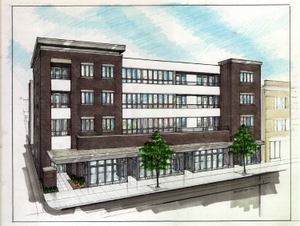Inclusionary Zoning Policies
Current Inclusionary Policies in the Chicago Region
The municipalities in the northeastern Illinois region with current inclusionary zoning policies include Highland Park, Lake Forest, the City of Chicago, and most recently, St. Charles. The ordinance in Highland Park requires all residential developments (new construction, renovations and conversions) resulting in five or more units to set-aside 20 percent as affordable. This is a slightly more aggressive policy than most; however, in 2000 only seven percent of Highland Park's housing stock was deemed affordable. Due to a significant decline in rental housing stock and sharply escalating housing values since the early nineties, Highland Park embarked on an extensive affordable housing planning process which included the adoption of strategies such as inclusionary zoning, a housing trust fund, and demolition fees. For more details, visit Highland Park's website at http://www.cityhpil.com/pdf/ordinances/article21.pdf.
Likewise, in 2000, only five percent of Lake Forest's housing was considered affordable and an increase in housing prices became an issue that needed to be addressed. Through a process that included the creation of an affordable housing committee consisting of city council members and the Mayor, Lake Forest enacted an inclusionary zoning ordinance in 2005. The Lake Forest ordinance requires that all residential or mixed-use developments (new construction, renovations of at least 50 percent of total square feet, and conversions) with five or more dwelling units set-aside 15 percent as affordable. For more details, visit Lake Forest's website at http://cityoflakeforest.com/pdf/cd/inclusionaryhousing.pdf.
Chicago first enacted an inclusionary zoning policy, known as the Affordable Requirements Ordinance, in 2003 and later expanded it in May 2007. According to its website, the city-wide policy includes the following conditions:
-
Applies to for-sale and rental developments with 10 or more units.

- Requires that 10 percent of the units be affordable in developments built on land purchased from the city.
- Applies if a zoning change is granted that increases project density or allows a residential use not previously allowed.
- The development is a "planned development," except for developments outside of the downtown area that do not obtain density increases
- Requires that 20 percent of the units be affordable in residential developments that receive TIF assistance.
- In for-sale developments, units must be affordable to and purchased by households with incomes at or below 100 percent of the area median household income.
- In rental developments, units must be affordable to and occupied by households with incomes at or below 60 percent of the area median household income.
- Affordable units are required to remain affordable for 30 years.
- Developers can meet the affordability requirements by providing the affordable units as part of the development project or by paying a $100,000 fee in lieu of each required affordable unit.
The case studies in this report are intended to highlight the successes, considerations, and issues that jurisdictions from around the country have experienced with various IZ policies. It shows that the many states, counties and municipalities that have adopted inclusionary zoning policies have generally experienced an increase in the affordable housing stock. However it is also apparent that in developing an IZ policy, governments must consider market conditions in order to achieve success.
| Are there other examples of inclusionary zoning policies in the region that should be highlighted in this report? Are there further details of the effects of the case studies above that should be considered when addressing inclusionary zoning? |